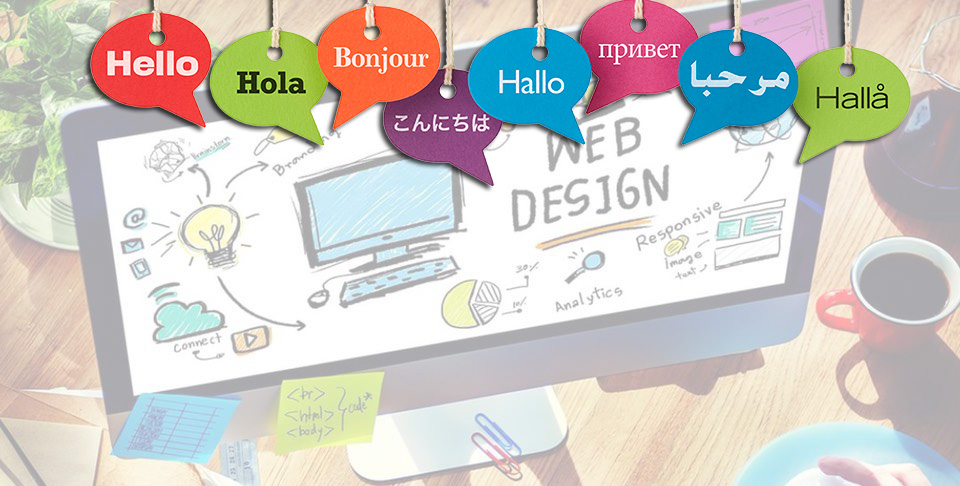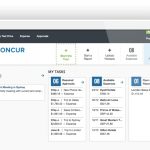Best Ways to Make a Multilingual Website
Your website is the foundation of your online business. It has various applications, and it shows how seriously you address your work. Looks and aesthetics are really important, but if you want to have wider impact, you need to make your site flexible and internationally comprehensive.
Adapting your entire content for a number of foreign languages can seem quite complicated. Localizing and organizing your website should be planned ahead, so that your web design and your site’s functionality don’t suffer. Here are some of the things you should keep in mind if you plan on developing a multilingual website.
1. Content
It doesn’t matter what kind of business you run online, people won’t be visiting just to admire its looks. You need to have useful and specific content for both local and international customers. Process of adapting your website for international representation consists from two steps.
LOCALIZATION
This step requires you to professionally translate your content for each specific target market. There are a number of great translating software options, but none of those have improved to the level where they can handle things such as dialects, local vocabularies and context. Knowing how things differ within the same languages, best advice is to hire a professional translator, or get translating services for each of your target groups. Localizing your content is just a first step.
OPTIMIZATION
In order to best adapt your content for your clients, you need to think about what you’re providing for each of your target groups. By translating a piece of content into a different language, keep in mind that your designated keywords might be adapted instead of being simply translated. You need to take in consideration localisms, acronyms, synonyms and generally the search preferences of your specific target group so you can address their needs properly.
2. Text
We’ve covered the content part, but it still has to be readable and adaptable to your website. If we just take a glance at a number of differences between written languages, adapting our content may seem incredibly hard. Luckily, there are some tips to help you address this issue.
All of the written characters are defined by numbers through encoding systems. There were a lot of coding systems for different languages, until Unicode was developed. Unicode provides unique numbers for characters with no concern about the program, language or platform. Currently used for more than 90 scripts, it has been implemented in Apple, HP, Microsoft, Oracle, Sun and IBM’s operating systems, and it represents the strongest foundation for multilingual adaptation.
3. Navigation
Your website has to be transparent and clear. Maybe it already is, and it’s completely intuitive and user-friendly, but have you thought about the way it’s put together?
There is a number of languages that have the standard of writing from left to right (LTR), however, there are also languages like Arabic that are written from right to left (RTL). With this in mind, you may try different approaches. From making a fully reflected website for RTL languages, to placing menus in the middle, there are ways to adapt your content.
Also, great idea is to create an ‘Entrance Page’, where you can set various language choices for your visitors. There are ways to implement geo-locating of your customers based on their IP address, but this method is still not absolutely reliable, so maybe leave this choice to your visitors, but make it clear and understandable.
4. Domains
It’s cheaper to have only one domain, and it is much convenient to take care of all of your target countries from here, but there’s an argument that this practice isn’t so good. At least – not from the Search Engine Optimization (SEO) perspective.
A search engine optimization company indicates that search engines use dedicated top-level domains for ‘geo-targeting’. This affects your visibility for country-specific searches.
Also, Google searches through the words in your URL, so you may add a specification to your name in the URL. Keep in mind that these specifications should also be translated to target languages.
5. WordPress Multilingual Implementation
If you have a WordPress business site, it’s really easy to adapt it for multilingual use. With WordPress this implementation of various languages is extremely easy.
It doesn’t require making separate installations of language sets. Translating your website’s content is as easy as installing a plugin and adding separate language page versions for each page.
These are just some of the tips of how to approach developing a multilingual site. Each business has its own specifications, and as long as you keep your site transparent and clear, and easily adaptable, you can expand your business with no trouble at all.
















